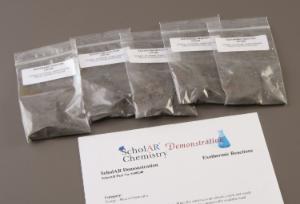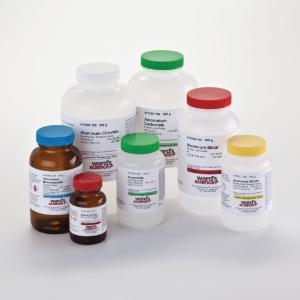Heat Up your Chemistry Class with this Exothermic Crystallization Activity
A hands-on way to help the students in your class investigate exothermic crystallization and supersaturated solutions.
Fill form to unlock content
Error - something went wrong!
Get Your Free Activity
You're in! Thanks for subscribing.
Middle School/High School
On a cold winter day, those reusable instant hand warmers we buy at gas stations provide a little relief. Even football players use them during cold-weather games. Once the hand warmer is activated, the pouch changes from a liquid state to a solid state (crystalizes). The is an exothermic (i.e., heat-generating) process. You can reproduce this effect in the lab so students can make scientific observations. Our free downloadable Crystal Ball activity is a great way to introduce students to the exciting and challenging world of crystals and their real-world applications. So, download it now to heat things up in your lessons about exothermic crystallization and supersaturation.
Why is crystallization exothermic?
Exo- means “outside (or external),” and -therm means “heat (or energy). So, heat is released outside the system during an exothermic reaction.
During the crystallization process, particles of a substance come together (bond) to form highly ordered structures (i.e., solutions transforming into solids). In chemistry, every bond-making process is exothermic. That’s why hand warmers make great hot pockets.
Fun Fact:
The thermite reaction is considered one of the most powerful exothermic reaction. Common iron rust reacts with aluminum to create corundum and molten iron, along with a great show of light and heat. Considering the melting point of iron is a jaw-dropping 1539oC (2802oF), we’d say that qualifies as the most powerful.
Why is melting endothermic?
Endo- means “into” and -therm- means “heat (or energy).” So, an endothermic process is one in which energy (or heat) is going into the system. Melting ice is an endothermic process. To change from solid to liquid, ice takes heat energy from its surroundings. Ice is made through Hydrogen bonding between water molecules (H2O). Breaking that bond requires heat energy. So, ice takes heat from its surroundings and breaks the bond by increasing temperature (kinetic energy in ice molecules). Students may find it mindboggling to learn that when we put ice in water, the ice doesn't give its cold to the water; it takes heat from the water.
Fun Fact:
One of the most important endothermic reactions is photosynthesis. Light energy is used to split water molecules into hydrogen and oxygen. The hydrogen is combined with carbon dioxide and water to make glucose. The plant releases oxygen (O2) as a waste product (and a gift to us oxygen-breathing lifeforms).
Download the Crystal Ball activity; it’s a super way to saturate your students with enthalpy, entropy, and free energy concepts.
Recommended products:
[StartProductBlock]

Ward's® Essentials Exothermic Reactions Lab Kit
Students monitor and graph temperature change in an exothermic reaction and create a heat pack, which utilizes an exothermic reaction— watch the video demo here.
[EndProductBlock]
[StartProductBlock]

Ward's® Chemistry Exothermic and Endothermic Reaction Demonstrations
Exothermic and endothermic reactions are safely carried out inside a plastic bag so students can pass the bag around and feel the results of the reaction.
[EndProductBlock]
[StartProductBlock]

Sodium Acetate Trihydrate
NaC2H3O2‧3H2O
[EndProductBlock]
